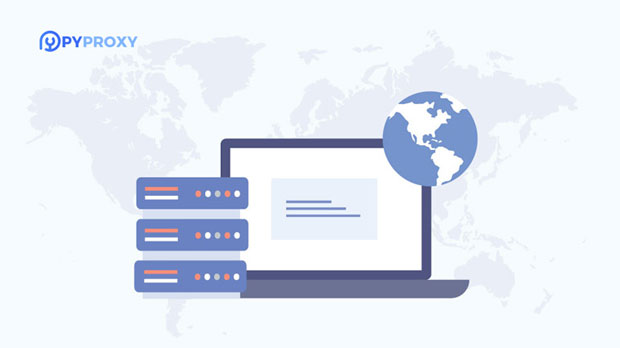In the world of proxy servers, the choice between different solutions can have a significant impact on the performance, security, and overall stability of your network. With the increasing need for anonymity and the demand for faster and more secure connections, static ip proxies are becoming a popular choice for businesses and individuals alike. Among the various proxy providers, PYPROXY and NodeMaven Proxy stand out as prominent options. This article aims to compare these two proxy services under static IP conditions to determine which one offers superior stability, performance, and reliability. Through a detailed analysis, we will explore their features, advantages, and limitations to help you make an informed decision about which proxy service best suits your needs. What Are Static IP Proxies?Before diving into the comparison between Pyproxy and NodeMaven Proxy, it’s essential to understand what static IP proxies are and how they differ from dynamic IP proxies. Static IP proxies use a fixed IP address that remains constant over time. This contrasts with dynamic IP proxies, where the IP address changes periodically. Static IP proxies are ideal for tasks that require long-term stability and consistency, such as web scraping, managing multiple accounts, or accessing geo-blocked content.One of the main benefits of static IP proxies is their reliability. Since the IP address doesn’t change, it reduces the risk of getting blocked or flagged by websites, providing a more stable browsing experience. This makes static IP proxies the preferred choice for businesses that rely on maintaining consistent connections to their target websites.Pyproxy OverviewPyproxy is a popular proxy service that offers users a variety of proxy solutions, including both residential and datacenter proxies. It has gained attention due to its focus on providing a user-friendly platform and robust proxy management features. Pyproxy’s static IP proxies are particularly known for their high reliability and stability.One of the key features of Pyproxy is its ability to deliver high-speed connections with minimal latency. The company offers dedicated static IP addresses, ensuring that users get a consistent and stable connection every time they use the proxy. Pyproxy also provides a comprehensive API for users who require advanced proxy management capabilities, allowing them to automate various tasks.Another significant advantage of Pyproxy is its global network of proxy servers. This vast network ensures that users can access content from various locations without facing issues like geo-blocking or IP bans. Moreover, Pyproxy offers excellent customer support, with a team available to assist users with troubleshooting and technical inquiries.NodeMaven Proxy OverviewNodeMaven Proxy is another notable proxy service that focuses on delivering high-performance proxies to its users. With a primary focus on providing both residential and static IP proxies, NodeMaven Proxy has garnered attention for its emphasis on speed and reliability. One of the standout features of NodeMaven Proxy is its advanced rotation system, which allows users to choose between rotating or static IP proxies based on their specific needs. The service also offers a secure, encrypted connection, ensuring that users' data remains private and protected. NodeMaven Proxy’s static IP service is designed for users who require long-term stability and reliable connections. This is ideal for tasks such as SEO, social media management, and other business-critical operations. The provider’s global reach is another advantage, as it offers proxies from multiple countries, allowing users to bypass regional restrictions and access content from around the world.Stability: Pyproxy vs. NodeMaven ProxyStability is one of the most critical factors when choosing a static ip proxy provider. The stability of a proxy service can be measured by its uptime, latency, and ability to maintain consistent connections without frequent disconnects or errors. In this section, we will compare Pyproxy and NodeMaven Proxy in terms of stability.Uptime and Reliability Both Pyproxy and NodeMaven Proxy offer excellent uptime guarantees, but there are slight differences in performance. Pyproxy has a reputation for providing a highly reliable service with minimal downtime. The company has invested in a robust infrastructure that ensures its static IP proxies remain connected consistently. On the other hand, NodeMaven Proxy also delivers high uptime, but some users report occasional slowdowns, especially when connecting to servers in certain regions.Connection Stability When it comes to connection stability, both services perform well, but Pyproxy stands out slightly. Users have reported that Pyproxy’s static IP proxies maintain consistent speeds and connections without frequent interruptions. In contrast, NodeMaven Proxy users occasionally experience dips in speed, especially during peak traffic hours.Latency Latency is another essential factor that contributes to overall stability. Lower latency leads to faster response times and smoother browsing experiences. Pyproxy generally offers lower latency, thanks to its superior infrastructure and optimized routing. NodeMaven Proxy, while still providing reliable latency, may experience slightly higher delays due to its rotational proxy system, especially in regions with limited server availability.Performance: Pyproxy vs. NodeMaven ProxyPerformance is a key consideration when choosing between Pyproxy and NodeMaven Proxy. Both services offer high-performance proxies, but each has its strengths and weaknesses.Speed Speed is critical for tasks like web scraping, gaming, and managing multiple accounts. Pyproxy has been praised for its high-speed connections, especially with its dedicated static IP proxies. Users can expect minimal buffering and fast loading times, even when accessing geo-restricted content. In comparison, NodeMaven Proxy offers competitive speeds, but some users have noted occasional lags during peak hours, which may impact high-demand operations.Bandwidth and Data Caps Another essential performance factor is bandwidth. Both Pyproxy and NodeMaven Proxy offer plans with generous bandwidth allowances. Pyproxy’s static IP proxies come with unlimited bandwidth, making them a great choice for users with heavy usage needs. NodeMaven Proxy also provides high-bandwidth options, but some plans may impose restrictions on data usage, which could be limiting for certain users.Pricing: Pyproxy vs. NodeMaven ProxyPricing is always a crucial factor when choosing a proxy service. Both Pyproxy and NodeMaven Proxy offer various pricing plans, depending on the user’s needs.Pyproxy Pricing Pyproxy’s pricing is competitive, with plans starting at affordable rates for users who need basic services. The cost increases as users require more advanced features, such as high-speed connections or access to premium proxy servers. However, Pyproxy’s pricing is justified by its high reliability, customer support, and advanced features.NodeMaven Proxy Pricing NodeMaven Proxy also offers flexible pricing, with options for both individuals and businesses. Its pricing tends to be slightly more expensive than Pyproxy for the same level of service, but the advanced features, such as rotating proxies and enhanced security, may justify the higher cost for some users.Both Pyproxy and NodeMaven Proxy are excellent options for those looking for static IP proxies. Pyproxy excels in terms of stability, speed, and overall reliability, making it a strong choice for users who require consistent performance for tasks like web scraping or managing multiple accounts. NodeMaven Proxy, on the other hand, offers advanced features like rotating proxies and enhanced security, which may appeal to users with specific needs. Ultimately, the best choice depends on your specific requirements and budget. However, for most users looking for a stable, high-performance static IP proxy service, Pyproxy is likely the better option.
Oct 12, 2025



































































